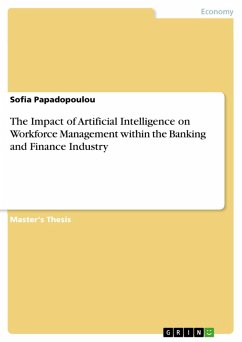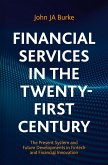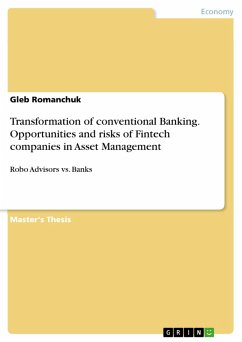Master's Thesis from the year 2020 in the subject Business economics - Banking, Stock Exchanges, Insurance, Accounting, grade: 1,6, University of applied sciences Frankfurt a. M., language: English, abstract: The purpose and objective of this thesis is to examine the degree of impact WFM is facing due to implementation of AI-based tools within the banking and finance industry. To do this the author will select and classify under the chapter 'Literature Review' how, in which departments, and to what degree, banks and other financial institutions have implemented AI tools within their organization. Secondly, the author will conduct interviews with executive leaders as well as with AI researchers and experts, and analyze the data received. For this study, the author focuses on AI's impact on WFM within the banking and finance industry. The purpose of the following questions is to refine the present knowledge gap within the banking and finance industry regarding the WFM impact of AI. The author will emphasize via a literature review and interviews exactly how AI-based technology tools have been implemented in the banking and finance industry. To do so, three research questions have been chosen and will be further analyzed throughout this study paper. The first question focuses on WFM and HR teams. It predicts how many people and what kind of qualifications will be deployed. As well as where and when they will be deployed. There are many consequences of banks and other financial institutions implementing more AI technology. In his book, Competing in the Age of AI, Iansiti and Lakhani mention that it is critical for leaders to understand the choice of model along with "navigating the ethics of digital scale". The author emphasizes that leaders must be able to build a strong organization of safety, security and sustainability. Firms spend billions of dollars on new AI related technologies and innovations. Despite this, banks and other financial institutions face three main issues. The first challenge is an outdated operating model. The second challenge is the lack of a fitting talent strategy. Both challenges are interconnected to each other. Likewise, as a third challenge, Workforce Management (WFM), the core process that boosts performance levels and competency for an organization, has been reformed and disrupted by the introduction of AI.
Dieser Download kann aus rechtlichen Gründen nur mit Rechnungsadresse in A, B, BG, CY, CZ, D, DK, EW, E, FIN, F, GR, HR, H, IRL, I, LT, L, LR, M, NL, PL, P, R, S, SLO, SK ausgeliefert werden.









